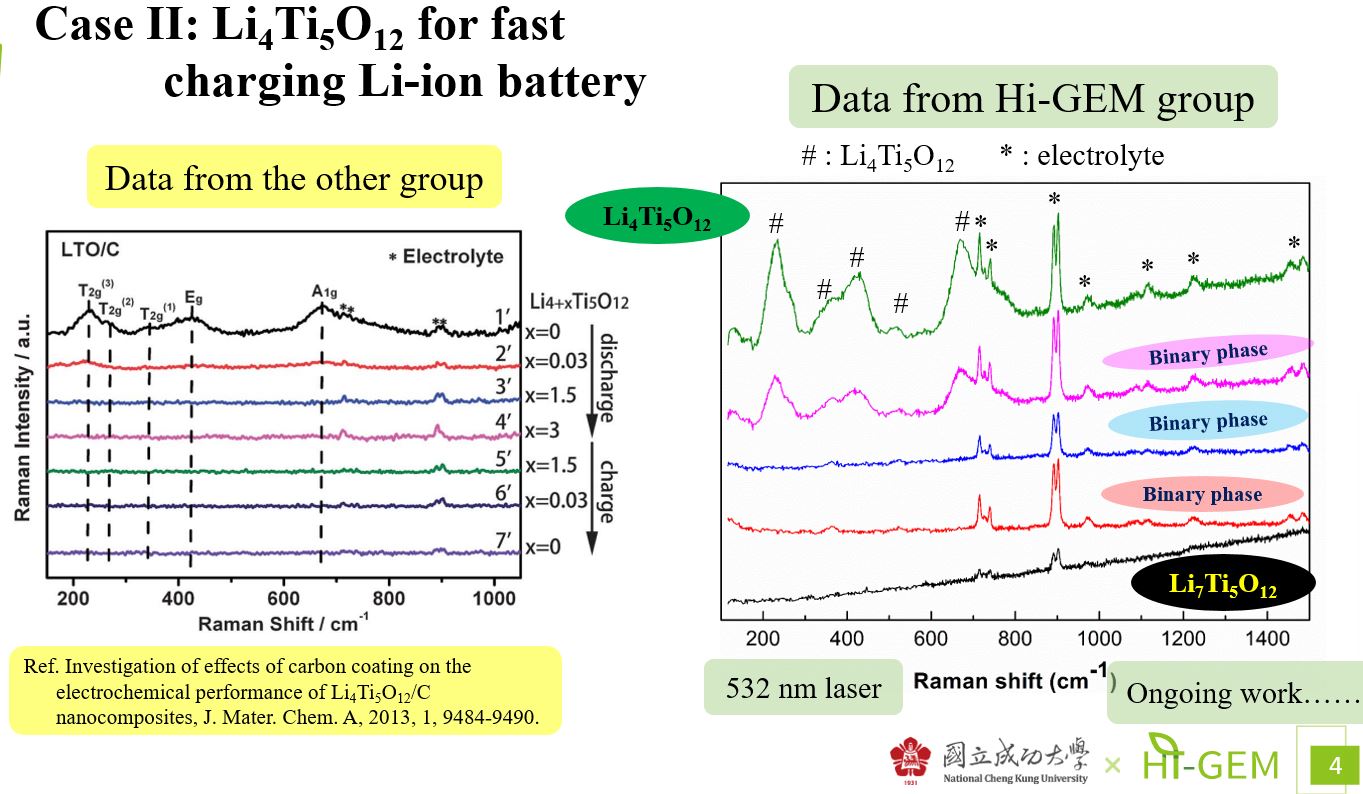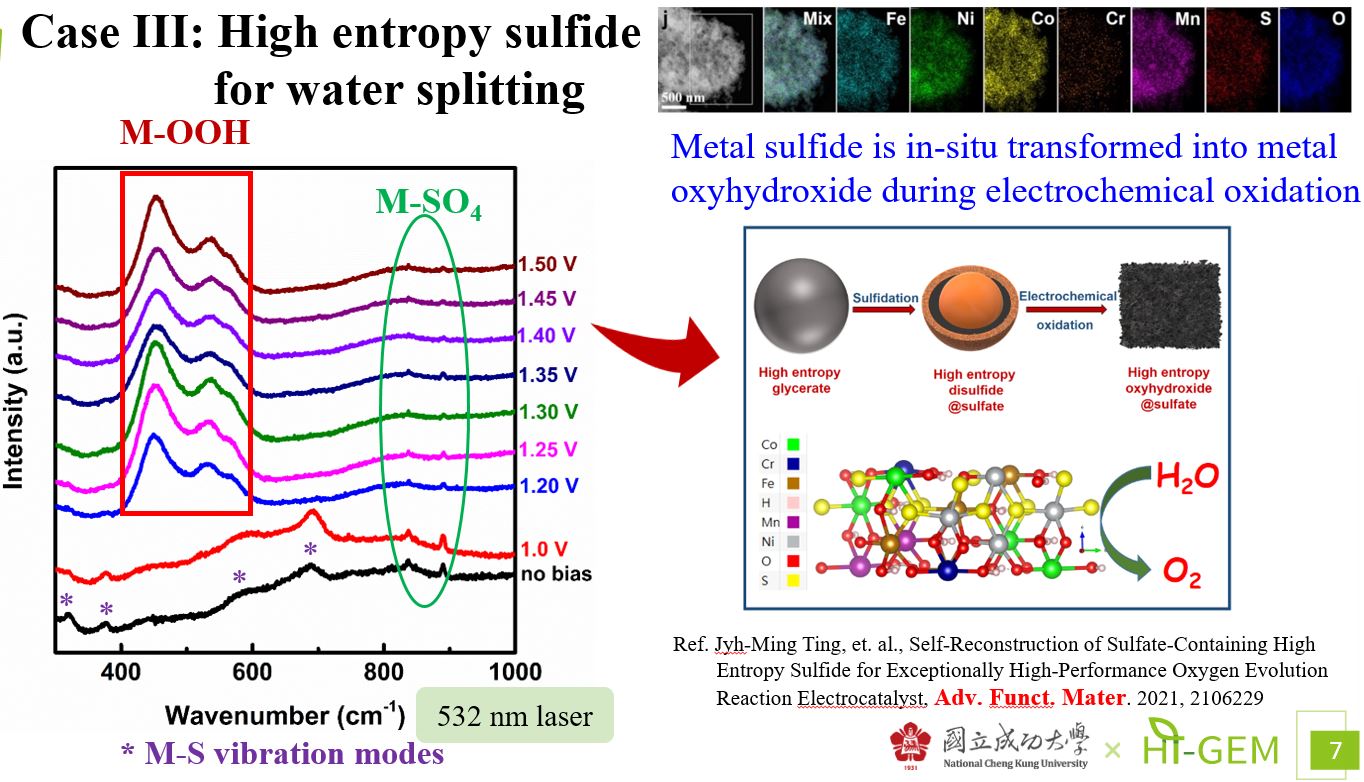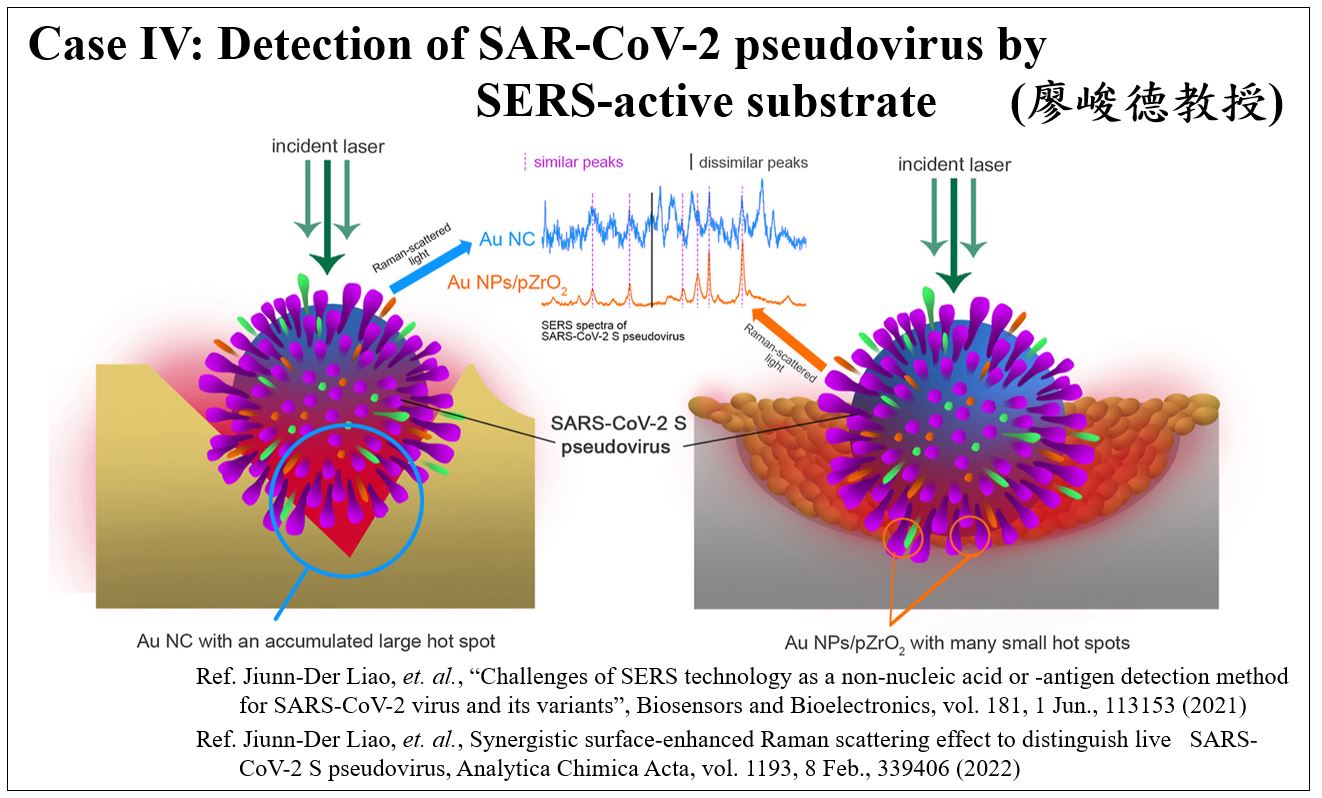Raman Spectroscopy
1. Equipment Manager
- Administrator: Dr. Ching-Huan Lee (Mobile: +886 933531372 ; Office: +886 6-2757575#34259)
(email: alex.chl.cera@gmail.com Please specify the title in the mail: HiGEM-Raman_自行/委託操作_使用單位)
- Agent: Dr. Yu-Min Shen (Mobile: +886 910975178; Office: +886 6-2757575#34260)
- Accounting Staf: Chu, I-Ting +886 6-2757575#34257
Annotation1: For those who need entrusted operation, please skip to item 9 to view the relevant instructions, and discuss the details of Raman analysis with the equipment manager in advance.
Annotation2: If you need to operate by yourself, please skip to item 10 to view the relevant regulations and instructions.
2. Equipment introduction
- Model: Raman microscopy (UniDRON) Download Brochure
- Date of Purchase: November, 2019
- Location: Room 9090, Science and Technology Building, NCKU
3. Introduction
Raman spectroscopy is an optical scattering technique that is widely used for the identification of materials and the characterization of their properties. It is commonly applied in material science, chemistry, physics, life science and medicine, the pharmaceutical and semiconductor industries, process and quality control and forensics. Raman scattering is an inelastic spectroscopy technique meaning incoming light undergoes a change in color and is scattered with a different energy. The Raman process specifically describes the interaction of incident light with molecular vibrations and rotations in a material. Light can either excite vibrations and lose energy (redshift) or pick up energy from present vibrations (that are typically thermally excited). As the shift in energy is mostly dependent on the material composition and structure and not the wavelength of the excitation light, Raman spectroscopy measures the energy shift of the Raman scattered light relative to the incident light energy which is characteristic to the sample that is being investigated. Raman spectroscopy is extremely adaptable to different experimental configurations, from compact handheld instruments to super high-resolution multistage lab systems. It is also adaptable to different samples in solid, liquid or gas phases, from solid state crystals to proteins in the body. Raman scattering is non-destructive and requires little to no sample preparation.
4. Service
-
Identification of chemical species of solid, powder, liquid, etc.
-
Perform operando Raman spectroelectrochemistry tests. There are several successful cases for these tests in the center.
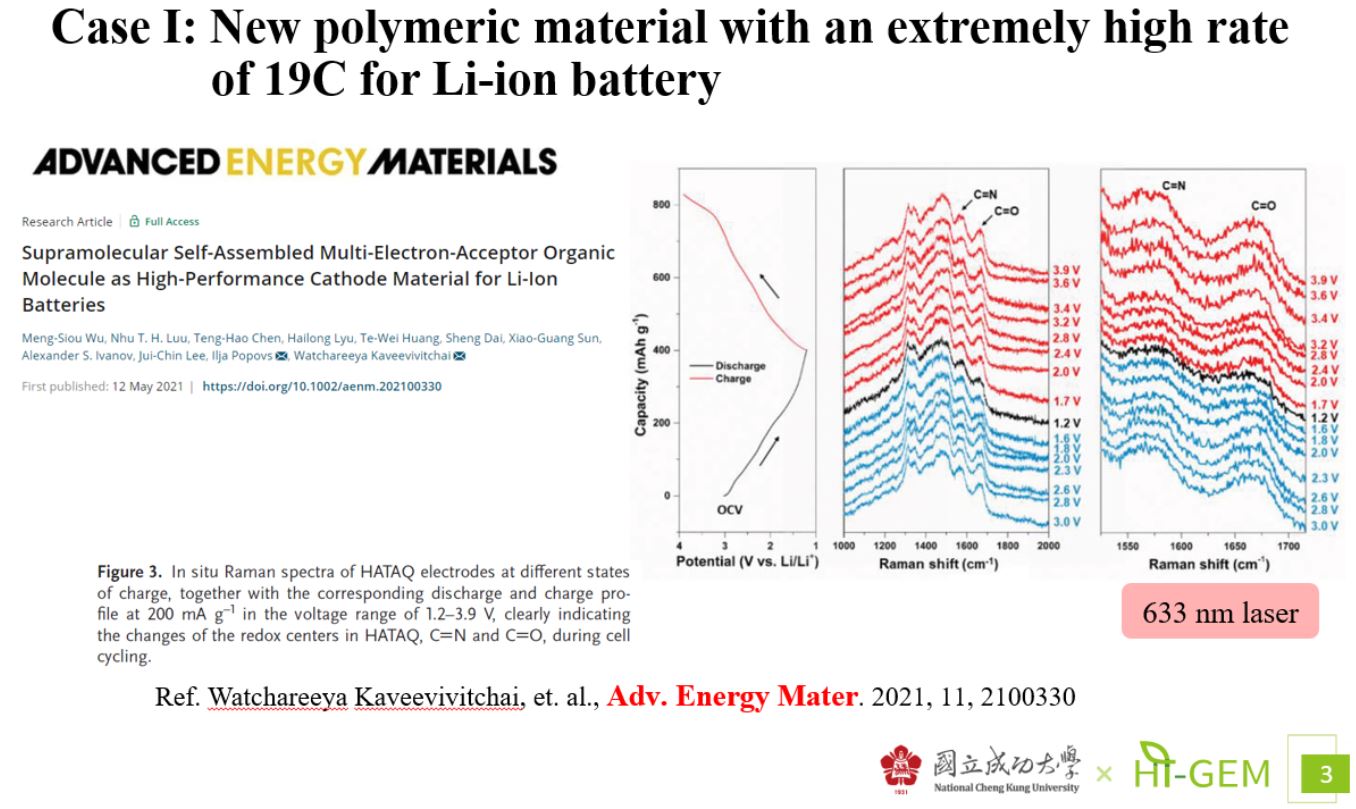
5. Precautions
- Applicable sample type: solid powder, thin film, thick film
- The sample measurement surface should be as flat as possible.
- The electrochemical cell used for on-site analysis needs to be approved by the center.
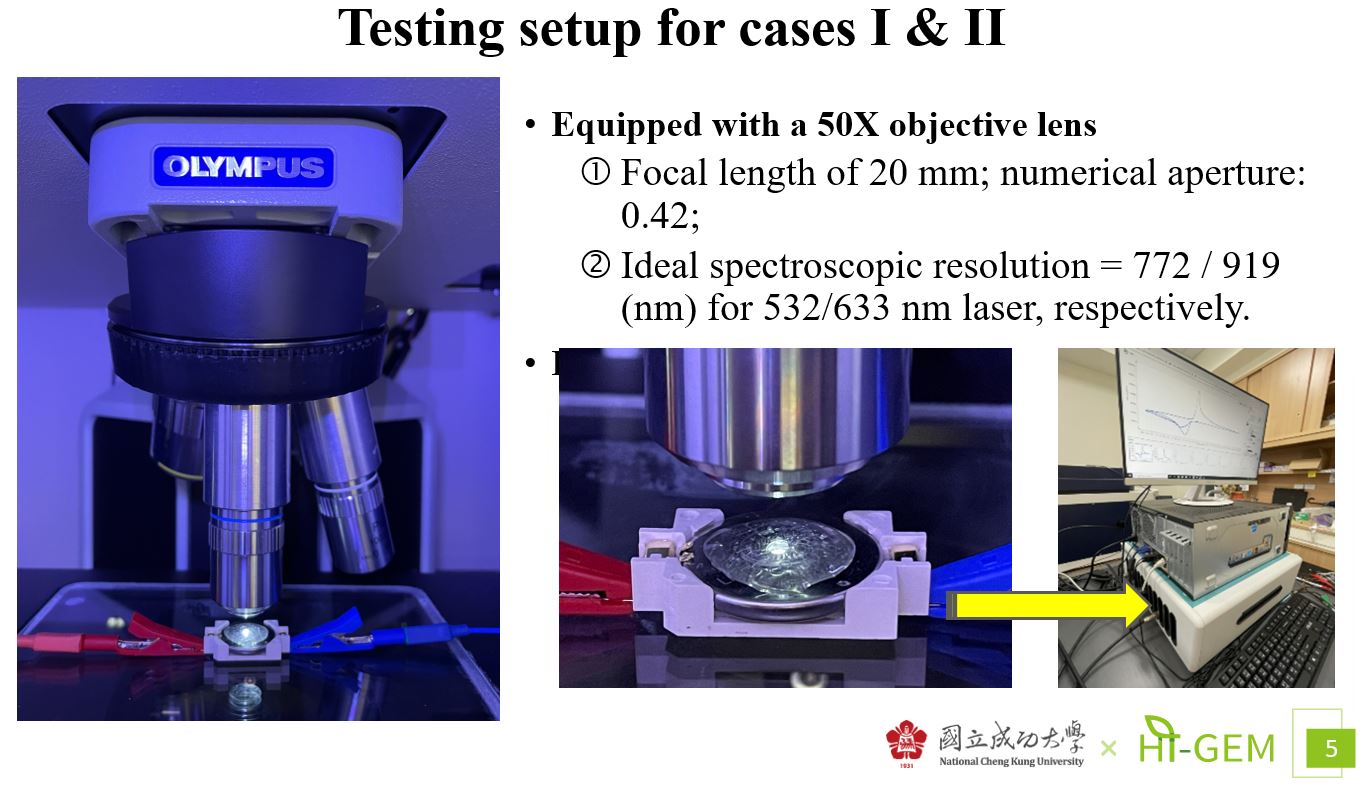
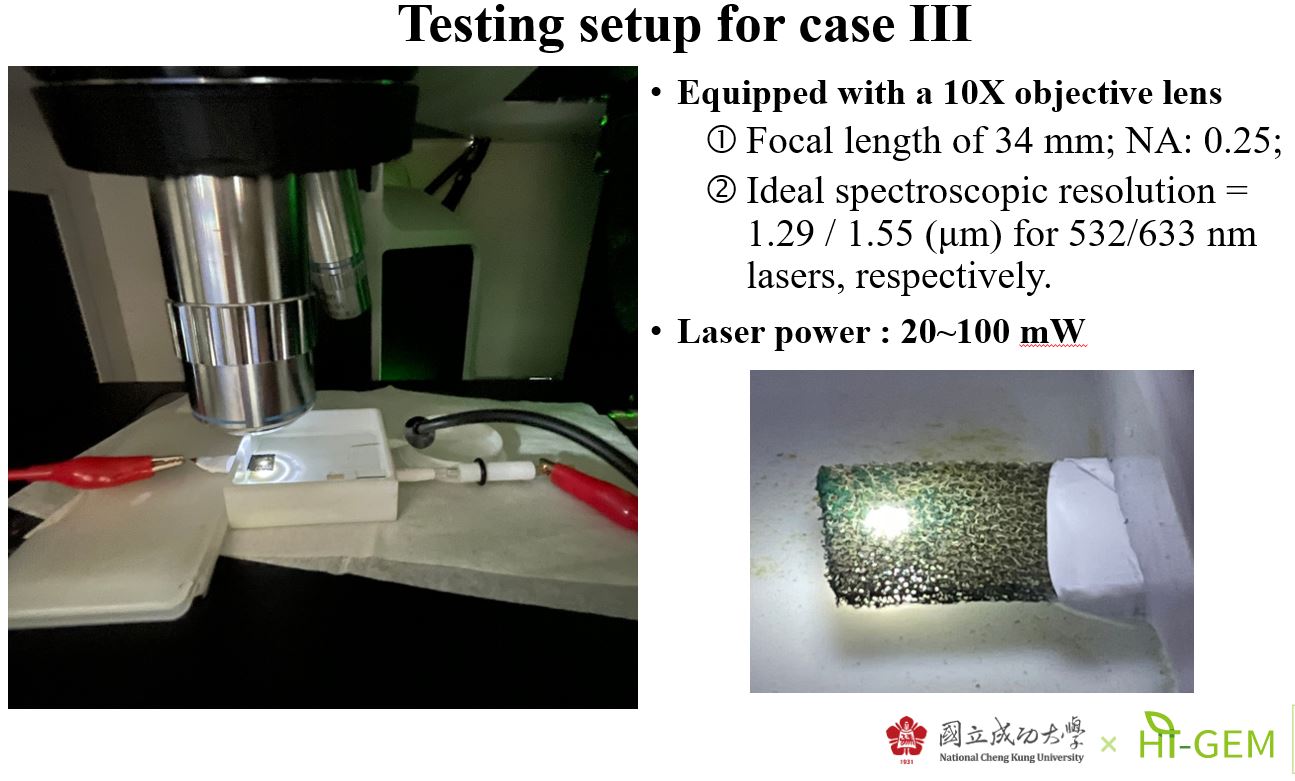
6. Opening hours
(Open all hours)
7. Precautions for reservation
- After being authenticated by the center, you can register an appointment account online and make an appointment online.
- If there is a need for a long-term on-site electrochemical experiment, the facility administrator must be informed 3 days before the experiment, and an appointment should be made during the time slot (優先 In-situ) in the table above.
- If the time period (優先 In-situ) is not used, it can be used for general operations.
8. Charging Information
- If you do not pay the fee for more than two weeks, you will be notified in advance. If the payment is still in arrears, your teacher and all laboratory personnel will stop entering the HG card machine control.
- The charging method is mainly based on the transfer of funds planned by the
Ministry of Science and Technology. You can also apply for a pre-issued
receipt with the center and pay in cash through the online payment platform.https://reurl.cc/Q3mbl0
9. Delegated operation
- For those who need entrusted operation, please contact the equipment administrator to discuss the details of analysis.
- Please fill in the form委託操作服務申請表(下載), and please send it to the central office equipment administrator, or email to alex.chl.cera@gmail.com after scanning. The center will help arrange the OEM time.
- Operation time: Mainly Monday and Tuesday morning 09:00-13:00 (The actual operation time is mainly notified by the equipment administrator.)
10. Relevant regulations on self-operated machine training
- Users must participate in radiation protection education and training for more than 3 hours, and obtain a radiation education and training certificate, or have received more than 3 hours of radiation protection education and training conducted by other radiation protection training companies approved by Atomic Energy Council, Executive Yuan.
- The training methods includes basic principles and training (2hrs), practice (2hrs), certification (2hrs). The fees are as shown in the table above.
- Users must fill in儀器設備訓練課程申請表(下載), and delievery to the center. Those who have been certified as qualified have to sign『國立成功大學跨維綠能材料研究中心儀器使用承諾書』(下載)才before using the machine.
- Permission
- Level A: Accept the training, practice, and certification courses of the center, and obtain certification and 100 hours of use. After being approved by the equipment manager, you can become an A-level user. They can operate the instruments by themselves, be responsible for instrument training courses, entrust service work, and maintain the functionality of the instruments and equipment, and have the highest authority to use the instruments and equipment.
- Level B: Requires central training, hands-on, certification courses, and certification. The instrument can be operated by itself.
11. Related documents
國立成功大學跨維綠能材料研究中心儀器設備使用及管理辦法 (Regulation of Instrument Management in HiGEM Research Center, NCKU)
國立成功大學跨維綠能材料研究中心儀器使用承諾書 (Commitment for Instrument of the HiGEM Research Center, NCKU)
儀器設備訓練課程申請表 (Facility Training Program Application)
委託操作服務申請表 (OEM Services Application Form)
